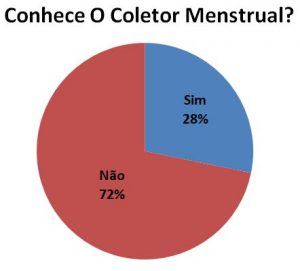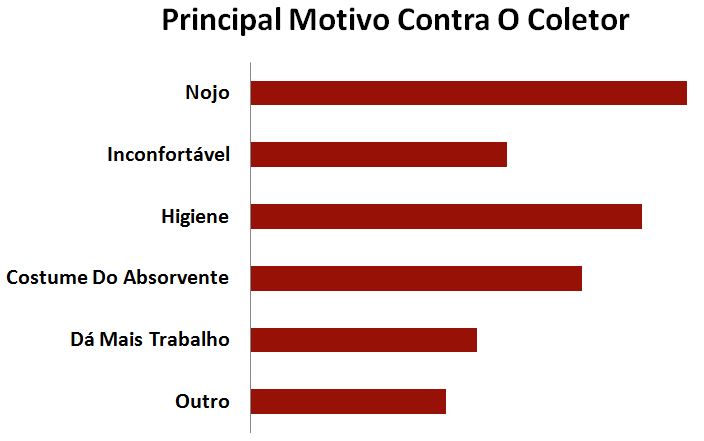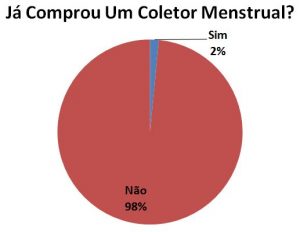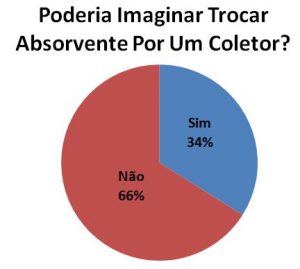External and internal pads, overnight or daily, with wings or without, for light flow or heavy flow… You are certainly well acquainted with all these options in the battle against our beloved and sometimes hated menstruation.
So many choices can be overwhelming, especially for younger girls who need to find what works best for them, as well as because of the pad culture. Menstrual veterans already know which option to use and when. But have you ever imagined having a single solution for your entire period, regardless of flow or duration? No? Then don’t worry, because the vast majority of women don’t know about the menstrual cup either—or “little cup,” as it’s also called.
72% of women have never even heard of it; only 28% say they know about it. The menstrual cup is simply a reusable medical-grade silicone cup, very similar to the material of a diaphragm, that is inserted into the vagina to collect menstrual blood. With a soft texture and unique shape, it may spark different opinions about its purpose, but it captures uterus blood inside the woman’s own body. It looks a bit like a tampon, but instead of absorbing menstrual blood, it collects it so it can be emptied into the toilet afterwards. The woman fits this little cup inside her body, leaving the tip sticking out of the vagina to make removal easier.
The menstrual cup culture, for the most part, is still foreign and has only been in Brazil for a short time—maybe just over two years. So it’s no surprise that many women still haven’t used or even tried it! Only one in fifty Brazilian women has bought a menstrual cup, even though one in three has considered switching her pad for a cup or, at the very least, trying it as an alternative.
Among the various brands available in Brazil, the company Famivita has developed FamiCup, a menstrual cup that is 100% hypoallergenic and can stay inside a woman’s body for up to 8 hours. Available in two sizes, FamiCup is suitable for all women, regardless of menstrual flow, age, or whether or not they are virgins. You can purchase your FamiCup menstrual cup here in our online store.
Pros and Cons of Use
Undoubtedly, the lack of information plays an important role in the decision to use a cup. It’s no coincidence that most of us barely know what it is, and only a few have the “courage” to just try it. With so little information and no experience, we start to wonder: “What must it be like to have a menstrual cup?”
Disgust is the main reason that leads a woman not to choose this type of product. Many women worry about the discomfort the cup could cause when removing retained blood. They also think about the extra work of always taking it out, cleaning it, and putting it back in. Many think, “My pad is so practical: just remove it, throw it away, and replace it with a clean one,” and in this mix of disgust, hygiene, and discomfort we find the main disadvantages of the menstrual cup.
But interestingly, no single reason stands out in our statistics below. There are even women who admit it might just be a matter of getting used to it. How about we think of the possible benefits a cup can offer?
The 34% who already use or would use the cup see three main advantages: practicality, comfort, and hygiene. Comfort and hygiene can be reasons for or against the menstrual cup. The difference is the perspective—compared to conventional pads, which can also be unpleasant for many reasons such as their fit and feeling in the underwear, the wings, or the characteristic, stronger odor of the blood. But what still dominates for these women is the idea of how practical it would be to not have to worry about carrying pads in their purse and being able to handle their period in any bathroom.
Because it’s small, you can carry the menstrual cup in your bag. Other perceived benefits include personal savings and sustainability. In a way, women who are willing to switch from conventional pads to a silicone cup are thinking about both the present and future. Even spending a bit more at first, it’s a worthwhile investment due to the product’s longevity, which can last around five years if well cared for. In ecological terms, the amount of pads dumped in landfills that take years to decompose would be instantly reduced! From a sustainability perspective, less raw material would be used in the manufacture of more and more pads—a very important thought in times of water and energy shortage.
Questions About the Menstrual Cup
Inserting it is simple: just fold the cup, since it’s quite flexible. It compresses and once inserted into the vaginal canal, adapts to the body. It’s easy to insert and remove—just gently pull it out. The delicate texture of the silicone does not cause pain, and is gentler than the material of a tampon. The feeling of having a soft silicone cup is less intrusive than a small stiff block of cotton.
To use it correctly, it’s advised to sterilize the cup at the start of each new cycle. Sterilization is done by boiling the silicone for a few minutes over low heat. Good product quality relies on the hygiene that the woman follows before use and also on how regularly she empties the cup, to also prevent accidents such as leaks.
The recommended time to empty it is, at most, every three or four hours. Usually, the cups describe the maximum usage time, such as the FamiCup, which is a maximum of 8 hours. Changing the cup is much like changing a tampon, and cleaning it before inserting is usually done simply with water and neutral soap. Some prefer to use a pantyliner along with the cup for extra leak protection.
The blood can be discarded directly into the toilet. Most cup brands offer two different sizes, and usually the price is the same for both. Prices typically range from R$50.00 to R$90.00.
For those who already use tampons, getting used to the menstrual cup is easier. But if you don’t use tampons either, how about seeing menstrual blood as a normal part of your body and try using a menstrual cup? It’s all a matter of adaptation, and it’s an alternative even for women who are allergic to regular pads.
And you, would you switch your pad for a menstrual cup?
Photo: Personal Collection TF


















